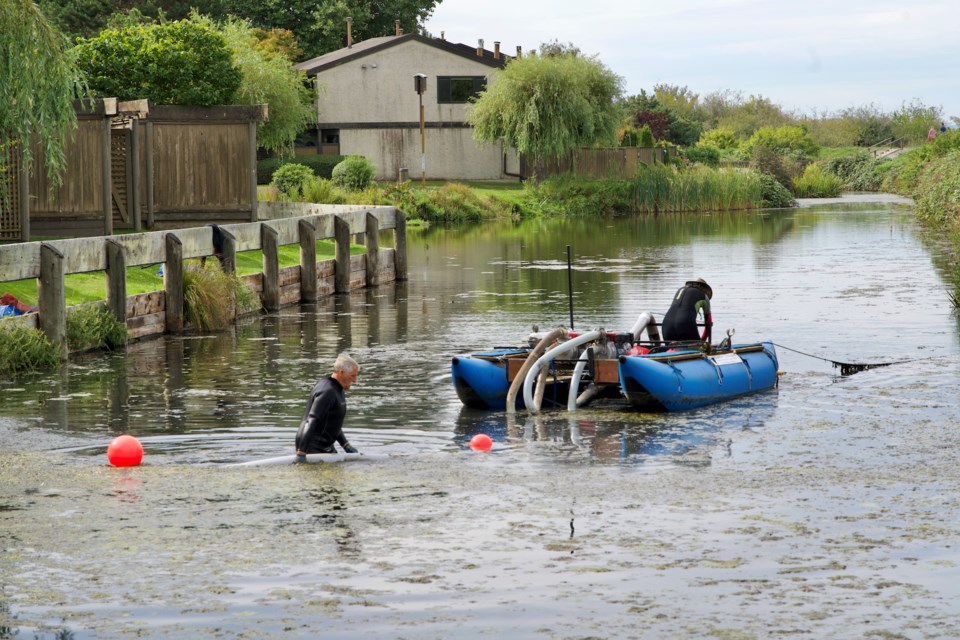A project is currently underway in Richmond to remove from the city’s waterways an invasive plant that likely came from aquariums.
In waterways along the West Dyke near Steveston Highway, divers are going underwater with a suction device to pick up and remove Brazilian elodea, along with its root structure, in an effort to manage the invasive plant.
The City of Richmond has been managing a large infestation of Brazilian elodea near the West Dyke since 2014.
“We believe the outbreak along the West Dyke came from an aquarium owner (or owners) who simply decided to dump the contents of their tanks into the watercourse – irresponsible behaviour that created a troublesome legacy for years,” said city spokesperson Clay Adams.
It’s because of the plant’s availability as an aquarium plant, along with its “aggressive” ability to rapidly reproduce, that makes it a concern, Adams explained, adding that Brazilian elodea can form a dense mat canopy that shades out other plants.
“It restricts water movement and traps sediments, altering the chemical and physical characteristics of the ecosystem and decreasing local biodiversity.”
The invasive plant can also have negative economic impacts, Adams said, as it can clog rivers and drainage canals, increasing the need for maintenance.
The work currently underway near the West Dyke – which began in August and will carry on until next spring according to signage posted in the area – is part of a three-year, herbicide-free trial to manage Brazilian elodea, which the city launched in 2018 with support from the provincial government’s Early Detection Rapid Response program.
The three-year trial was impacted by the COVID-19 pandemic, which is why work is expected to continue into 2022, said Adams.
However, environmentally-friendly removal is a “painstaking process,” Adams said, noting that Brazilian elodea can rapidly reproduce through any small fragments that remain.
The city was, however, able to locate specialized, privately-owned machinery – the suction equipment used by the divers – to remove the entire plant structure.
The plant is then collected in bags on a small water craft and disposed of safely at an authorized facility, said Adams.
“It is our understanding that Richmond is the first municipality to begin using this machinery in B.C.,” he said.
While the area of the West Dyke is the only location where this process is being used, the city is looking at whether it could also be used to manage other invasive aquatic species such as Parrot’s Feather.
That plant, native to the Amazon River, was also likely introduced to Richmond as an aquarium or pond plant that was dumped into a watercourse, according to the city’s website, around 2007.
In fact, invasive species are “far too common” in Richmond, according to Adams, including fire ants, hogweed and giant hogweed, knotweed and wild chervil, as well as more common species such as English Ivy and Himalayan Blackberry.
In 2016, Richmond city council endorsed the Invasive Species Action Plan to manage these invasive species throughout the city. While work can take place year round, it’s typically carried out between April and September.
Anyone who wishes to know how to dispose of a potential invasive species can contact the city’s invasive species hotline at 604-276-4316 or by email at [email protected]



